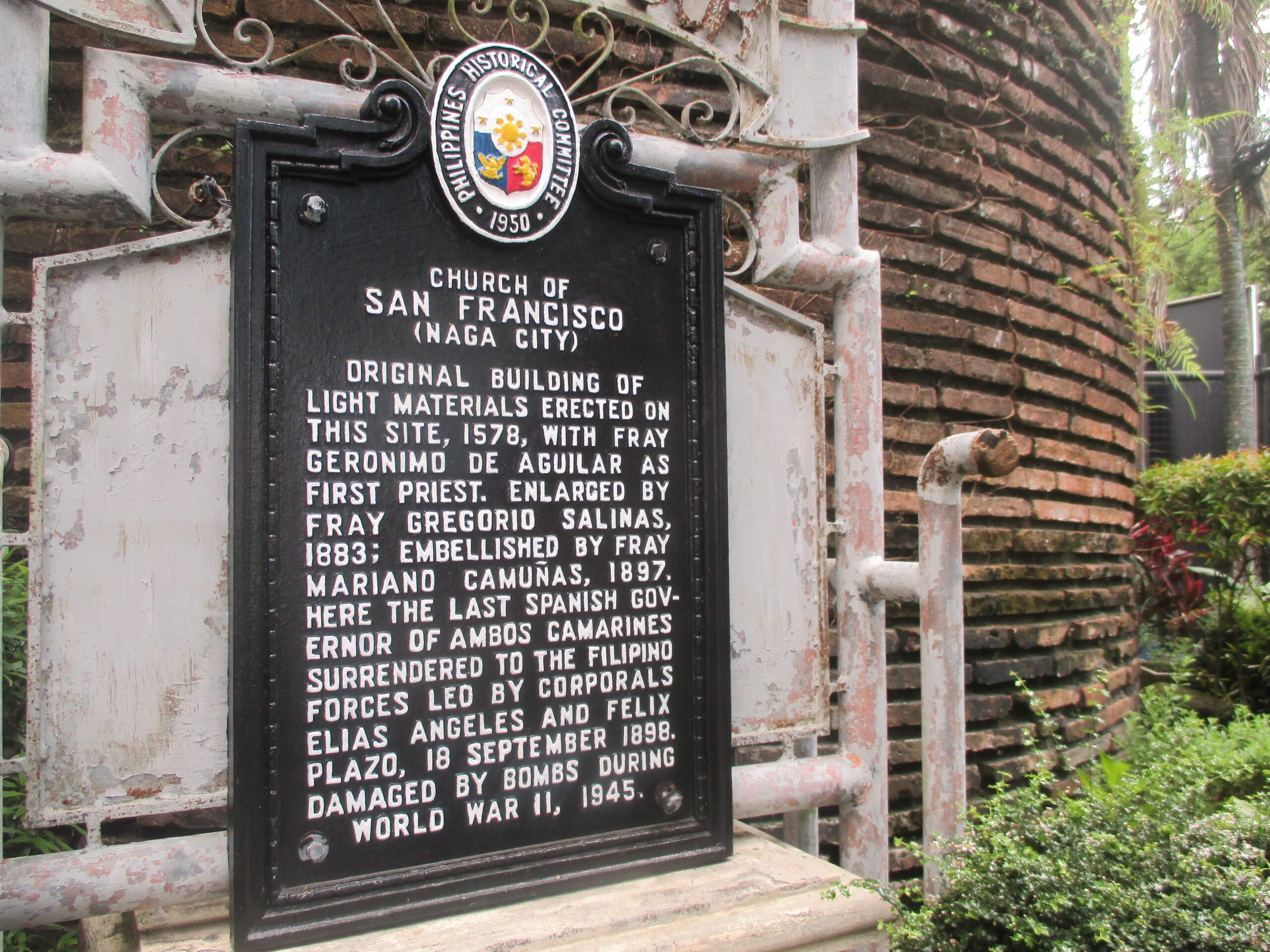Physical Address
304 North Cardinal St.
Dorchester Center, MA 02124
Physical Address
304 North Cardinal St.
Dorchester Center, MA 02124

This is AI generated summarization, which may have errors. For context, always refer to the full article.
These seven churches worthy of this year’s Visita Iglesia are silent witnesses to the province’s religious and historical growth
CAMARINES SUR, Philippines – At the riverbank of Naga City, formerly Nueva Caceres, stands a 17th-century belfry of a church that has endured both the harshness and glory of time.
Initially constructed with light materials in 1578, San Francisco Church underwent several stages of development — from an expansion in 1883 to adding another layer of architectural coatings in 2022.
But setting aside its impressive appearance, who would believe that this church’s infirmary and basement served as interrogation and torture halls of Filipinos who were arrested during the peak of the Filipino-Spanish War?
It was also in this church’s fortress where the Spaniards accepted defeat and surrendered to the uprising of Bicolano revolutionaries led by Elias Angeles and Felix Plazo in September 1898.
San Francisco Church is just one of the Spanish colonial structures in Camarines Sur that serve as a physical proof of the province’s high number of Roman Catholic population. They have stood still along with the Camarines Sur people in witnessing the town’s progress over the past decades.
Beyond the stories of faith and devotion in Camarines Sur, these centuries-old churches have so much more to tell about the province’s rich heritage.
Here are seven churches that you can visit in Camarines Sur this Holy Week where you can reflect both on faith and history.

Located in Quipayo, Calabanga, Camarines Sur, this church was initially established by Franciscan missionaries in 1578 with wood and nipa. It was later replaced with a brick structure in 1616. Quipayo Church, the home of Our Lady of Immaculate Conception, was the head of the Christian mission in this portion of the province when it was first constructed.

This church, located at the center of Calabanga, Camarines Sur, has been renovated several times due to the impact of natural disasters. It was first constructed in 1749, destroyed by an earthquake in 1811 and rebuilt in 1849. The present church was constructed between 1874 and 1897. Its patron saint, Our Lady of La Porteria, is celebrated every September 8.

Constructed in 1583, this old church in Canaman, Camarines Sur was dedicated to Our Lady of Assumption Parish which is being celebrated every August 15. This church also witnessed the resistance of Canaman people during the American occupation. Militants burned the church in 1900 after learning that Americans were closing in. The natives did not want the old church to fall at the hands of the invaders.

Established in Camaligan, Camarines Sur in 1795, the parish witnessed the town’s progress for years. Camaligan was founded in 1795 when it officially separated from Naga. Its Baroque architecture is still evident up to this day, with its red-pink appearance from the use of brick materials.

In 1710, a chapel was built facing the river in Naga City. The stone church was erected in 1741 and was improved from 1876 to 1877. It was dedicated to the Lady of Peña de Francia, the patron saint of Bicolandia that is celebrated every September in Naga City. The Peñafrancia Church, being the original home of “Ina,” has been a significant church in Naga City as it has witnessed the growing devotion of Bicolanos through the years.

The original structure of Naga Metropolitan Cathedral, formally St. John the Evangelist Parish, was erected in 1595. A Spanish Royal Seal can be seen attached on its door as a tribute to the contribution of Spanish royal funds to the construction of the present church from 1808 to 1842. It is considered the “Mother of all Churches in Bicol” and the largest Catholic church in Southern Luzon.

Built in 1578, the San Francisco Church in Naga has endured for centuries. It served as a home of Franciscan missionaries during the Spanish colonial period, but it was also where the Spaniards succumbed to Bicolano revolutionaries during the Spanish-Filipino war.
It was heavily destroyed during World War II, leaving its bell tower as the only remaining fragment of the original church. It earned its initial Level II Historical marker in 1950 and was re-unveiled in February 2025.
These seven churches, worthy destinations for this year’s Visita Iglesia, are just some of the Spanish colonial structures in Camarines Sur that serve as a silent witness to the province’s religious and historical growth. – Rappler.com